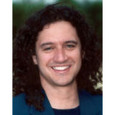There must be something wrong with the way I talk.
I decided this must be the case because when I say I teach meditation, people frequently say, "Oh, you do yoga?"
Meditation… yoga… I don’t think they sound like the same words – do you?
Many people, however, seem to think they are the same thing. Yes, Pantanjali's yoga included meditation, and there is yoga in some of the Tibetan Buddhist schools of meditation. But meditation and yoga are not the same things and often not even remotely related.
One can be quite good at hatha yoga without ever having practiced meditation, in the same way that you can be an experienced meditator despite not being able to touch your toes to save your life.
I was first introduced to yoga mediation at the age of twelve while reading Autobiography of a Yogi by Parmahansa Yogananda. I read the book on the subway heading to downtown Washington, DC. I found it somehow strange and magical to be reading that book while I was so far underground. I don't know why that was, but the experience was so much fun that I often went past my own stop so that I could stay in that inner, meditative state.
For several years, I studied the teachings of the Self-Realization Fellowship and later, through books, those of Baba Hari Das (who taught Ram Das, the man who wrote Be Here Now). After I moved to New York, I lived down the street from the Sivananda Yoga Center and across the street from the Integral Yoga Center. Both places focus more on yoga than they do on meditation, particularly in comparison to what I experienced when I began studying Buddhism.
Buddhist traditions usually give much less time to the body than yoga does, with meditation being main focus instead. Paying attention to the body was done mainly in order to facilitate the ability to sit still for hours at a time without being too uncomfortable. However, the Kum Nye practices from Tarthang Tulku's Nyingma Tibetan lineage would be recognizable to anyone who has ever practiced yoga.
Meditation and yoga are kind of like two sides of the same coin. When you practice correctly, time spent doing yoga can not only impact your body, it can also help you discover how the mind works in a way that leads to mental clarity and calm. In the same way, when the mind grows clearer as the result of meditation, the body can follow suit; paradoxically, sitting like a pretzel in the lotus posture can cause you to stand up much later finding that you’ve actually become more flexible than when you started.
Steven Sashen began meditation when he was eight years old, was one of the first biofeedback pioneers, and researched cognition and perception at Duke University. In addition to a successful career as an entrepreneur and entertainer, Steven has taught transformational techniques around the world and developed the Instant Advanced Meditation Course, which Dr. Gay Hendricks calls, "Perhaps the fastest and easiest way to relax, expand awareness, and find deep inner-peace."
Additional Resources covering Meditation can be found at:
Website Directory for Meditation
Articles on Meditation
Products for Meditation
Discussion Board
Steven Sashen, the Official Guide To Meditation

Post new comment
Please Register or Login to post new comment.